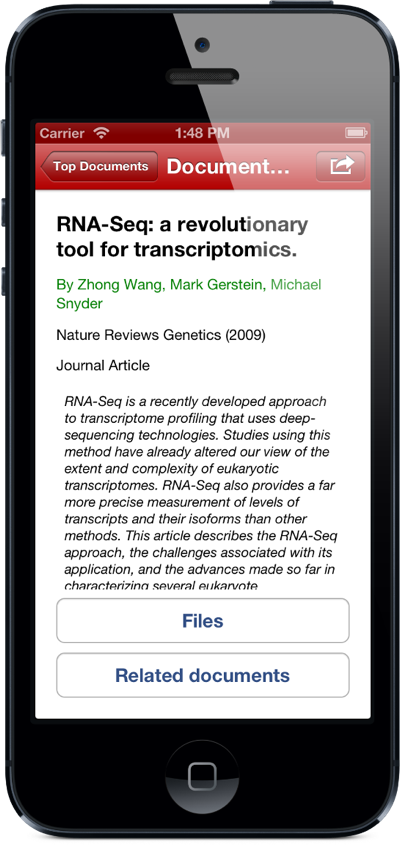MendeleySDK update
There are many opportunities for scientists to interact with Mendeley and its Open API. Today, we are releasing a new version of our MendeleySDK, to make it even more accessible for iOS and OS X apps.

So what’s new?
There is a bunch of new properties for documents, from keywords to pages, both public and private. We also added methods to easily mark documents in your library as read/unread, and starred/unstarred. And to make things more social, you can now get contact information for users, including email addresses and phone numbers when available.
Finally, we worked on the API client class to allow explicit authentication, as well as the ability to completely reset the login process without having to restart the application. It’s more flexible, and always very simple to integrate the SDK inside your own application. We take care of all the operations, from the authentication to the data parsing.
OAuth vs. the App Store
Speaking of the authentication process, arguably the most important new feature is the ability to log inside the client itself, instead of switching to Safari. But why would you want your users to enter their credentials inside the app?
Security is always a matter of usability. If you really don’t want to know your
users’ credentials, you need to redirect them to a standalone web browser (with
iOS, that would be Safari Mobile). Unfortunately, this process can be confusing,
because most users don’t understand the point of isolating the authentication
process. Apple thinks that it’s a bad user experience too, and will probably
reject your app if you try to submit it to the App Store. To conform to their
guidelines, make sure to use our new authentication method, and plug it to your
own UIWebView. Just remember: with great power comes great responsibility.
Build your own app
We believe that MendeleySDK v1.1 can help you build great apps.
Last week, we released “PaperShip”, a new Mendeley client for iPhone and iPad, and guess what? Everything is synchronised using MendeleySDK. Now it’s up to you to build your own app and maybe even contribute to the project.
You can consult the comprehensive list of changes on the project wiki. All you need to get started is explained on GitHub, and if you have any question, feel free to contact us.


 Share on Facebook
Share on Facebook Share on Twitter
Share on Twitter